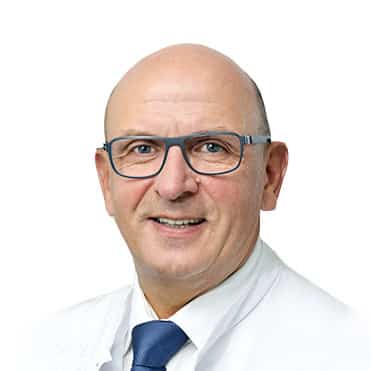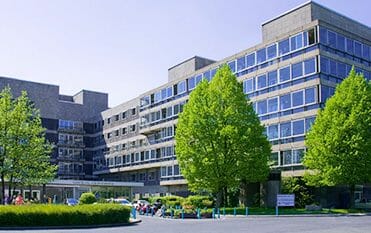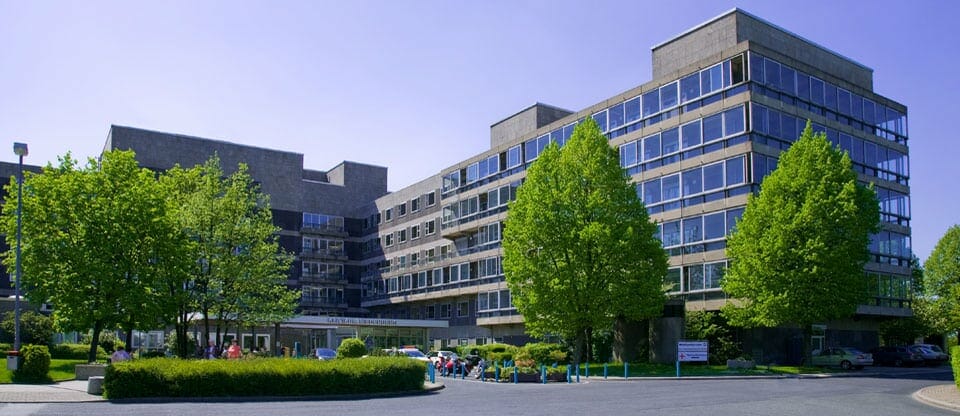Targeted Therapy Anti-cancer therapy (“targeted therapy”) is still a relatively new molecular biological direction in the treatment of cancer. While chemotherapy acts more non-specifically, damaging healthy cells as well, with the help of new specific active substances (“biopharmaceuticals”) it is possible to target cancer cells – a technique that is effective but less stressful for the entire body.
Targeted therapies currently being used to treat breast cancer target mediators (“ligands”), block receptors for these mediators on the cell surface and suppress signaling pathways within cells, thereby affecting tumor and blood vessel growth.
At the end of 2013, five different types of targeted therapies were approved by the FDA for the treatment of breast cancer, some for curable situations, others for incurable, i.e. metastasized situations.:
- suppression of cell growth by blockade of receptors using HER2 antibodies (trastizumab, perticumab),
- inhibition of cell growth by disrupting signal transduction with a thyroxine kinase inhibitor (lapatinib),
- suppression of cell growth by disrupting the intracellular mTOR signaling pathway with an mTOR inhibitor (everolimus)
- suppression of vascular growth (suppression of angiogenesis) with VEGF antibodies (bevacizumab).
In addition, many other targeted therapies are in development and are being tested for efficacy in clinical trials.
Antibodies against HER2
Approximately 15 % women with breast cancer have an increased concentration of the growth factor receptor HER2 in a histological specimen. These tumors are very aggressive and patients with this type of tumor have so far had a significantly lower chance of survival. New targeted therapies could help many of these patients.
HER2 receptors can pair with similar and other receptors of the so-called HER family (“dimerize”). This pairing conducts growth signals into the interior of the cell. In order to interrupt this relationship, block the receptors located on the cell surface with the help of monoclonal antibodies. These antibodies are proteins (proteins) that are produced in the laboratory in such a way that their shape exactly repeats the shape of the binding site, in this case, corresponds to the HER2 receptor, and is firmly attached to them. Now the receptors can no longer bind, the impulse for cell division is not turned on, and the tumor can no longer grow. HER2 antibodies trastuzumab (Herceptin®), given by infusion, is the oldest targeted therapy for breast cancer and is given to patients with advanced breast cancer as well as prophylactic (adjuvant) therapy to patients with a good chance of recovery. Often, in order to enhance the effect, chemotherapy is combined with antibody therapy. Since 2013, the antibody drug pertuzumab (Perjeta®) in combination with trastuzumab and chemotherapy has been approved for the treatment of patients with advanced breast cancer. It works similar but not exactly the same as trastuzumab, and the combination of both agents with chemotherapy is particularly effective. Side effects corresponding in their own way to trastuzumab therapy alone are generally somewhat more common, with the exception of complaints from the heart.
Tyrosine kinase inhibition against HER2
Not only by blockade of HER2 receptors located on the surface of cells by antibodies, cell growth can be suppressed. Tyrosine kinase inhibitors act inside the cell. These substances are called "small artificial molecules" because they are very small compared to other substances.. Due to this, they can penetrate directly into the cell and block the inner part of the receptors, tyrosine kinases. Thus, signal transmission to division is disrupted, cell division does not occur.
Since 2008, the tyrosine kinase inhibitor lapatinib (Tiverb®), which blocks the signaling of the growth factor receptor HER2 and EGFR, has been approved for therapy in advanced stages of HER2-positive breast cancer. This drug is used in the form of tablets, and is also combined with oral chemotherapy or with endocrine aromatase-blocking therapy. Typical side effects of this treatment are diarrhoea, skin rashes ("rash", hand-foot syndrome), and abnormal liver function.
suppression mTOR: Bypass endocrine resistance
A targeted therapy that is given to patients with hormone receptor-positive cancer is the so-called mTOR inhibitor.
Inside cells, information is transmitted for division and growth through various signaling pathways. In this case, we are talking about closely interrelated processes that depend on various molecules. By too much activity of the so-called mTOR signaling pathways, initially hormone-sensitive cells may become resistant to antihormonal therapy. This means that tumor cells, despite endocrine treatment, continue to grow. If these signaling pathways are blocked, tumor cells again begin to respond to antihormonal substances. In this case, the use of chemotherapy may be further delayed.
Since 2012, the mTOR inhibitor everolimus (Afinitor®) has been approved for use in combination with the aromatase inhibitor exemestane for the treatment of hormone-receptor-positive, metastatic breast cancer, if the disease has progressed after treatment with another (non-steroidal) inhibitor (letrozole or anastrozole) .
Typical side effects of an mTOR inhibitor are various infections, inflammation of the oral mucosa, and inflammatory changes in the lungs. In addition, it draws attention to the fact that some medications (for example, drugs that lower blood pressure or cholesterol, antibiotics, antifungal agents), as well as St. John's wort, grapefruit juice, due to possible interactions with everolimus, should not be used.
Inhibition of vascular growth (Inhibition of angiogenesis)
In order for cancer cells to grow and spread throughout the body, they need oxygen and nutrients. When the tumor reaches a certain size, it can no longer receive "nourishment" from its immediate environment, but must form new vessels for its own provision. To do this, it sends a signaling substance, the growth factor VEGF, which induces nearby vessels to form branches to the tumor. This new formation of blood vessels is called "angiogenesis" (Greek: angio = vessel; genese = formation).
For molecular biology therapy, this growth factor is the target point of application: the monoclonal antibody drug bevacizumab (Avastin®) attaches to the growth factor VEGF and blocks it so that it can no longer dock with blood vessel cells in order to trigger the growth signal. As a result, no vessels are formed to the tumor, so it is no longer provided with nutrients and shrinks.
Since 2007, bevacizumab in combination with taxane-containing chemotherapy has been approved for the treatment of patients with HER2-negative metastatic breast cancer. By treatment with bevacizumab in combination with chemotherapy, it is possible to temporarily stop tumor growth in patients with metastatic breast cancer, even when no increase in survival is expected. Bevacizumab in the form of infusions accompanies chemotherapy for all three weeks.
Video
Request appointment
Useful links

















